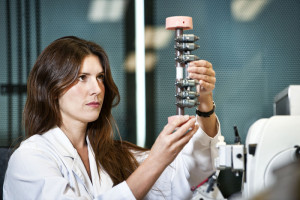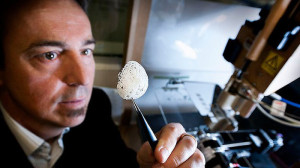Four universities in three countries across two continents have partnered to create one revolutionary masters degree program in 3D bioprinting. Together, Queensland University of Technology and the University of Wollongong in New South Wales in Australia, along with University Medical Center Utrecht in the Netherlands and the University of Würzburg in Germany, have created the world’s first masters degree program that will allow students to claim boldly and proudly that they are masters of biofabrication.

The two year program gives students one Master’s degree in Regenerative Medicine & Technology from one of the above Australian universities and one of the above European universities. QUT’s biofabrication research has become famous for 3D printing bioink scaffolds infused with a patient’s stem cells to help a woman grow a new breast after a mastectomy. The University of Wollongong has made headlines for the use of seaweed and 3D printing to repair damaged tissue. Both universities, with their European counterparts, will fulfill the anticipated demand for bioprinting researchers, as well as drawing students to the respective countries for the exciting and growing field of 3D printed tissues and implants.
Professor Dietmar W. Hutmacher, leader of QUT’s biofab research, explains how the new program will benefit both Australia and the students themselves, “This degree is a vital step in ensuring Australia is a high-value, high-tech manufacturer in the future. Graduates will be at the forefront of an industry that will always be in high demand given the ageing of populations around the world and which cannot be easily replicated by any other country.Each of the four universities has established a track record in key areas of biofabrication, including polymer chemistry, cell biology and clinical implants. The universities will each admit 10 students to the degree who will graduate with a multidisciplinary outlook and expertise which would be welcome anywhere in the world.”

Australian students will study for nine to twelve months at one of the European schools, while European students will do the same at the Australian universities. Hutmacher adds, “Graduates of the new higher degree will gain an international career and have the ability to lead this exciting medical revolution which is going to be particularly important for our ageing populations.”
After seeing how QUT has already used 3D printing to benefit patients, in the video below, I can’t help but think of the droves of students who’d apply to the new program. The program is interdisciplinary, fusing medicine and technology in such a way that any budding scientists would want to attend. As we’ve seen the boom of bioprinting breakthroughs to take place in the past few years, I think that this initiative will inspire other universities to follow suit.
Source: Golden Age of Gaia



